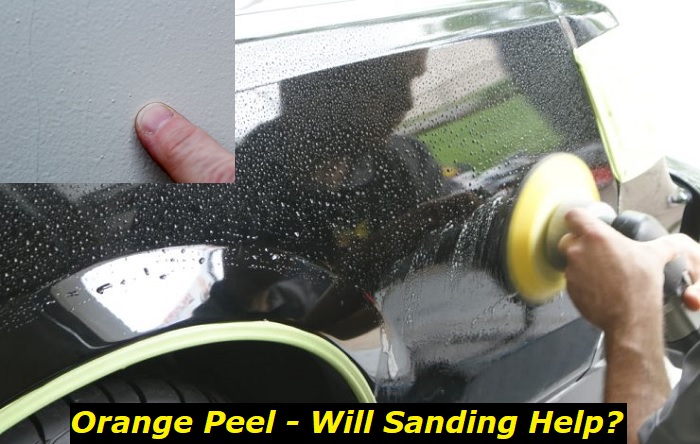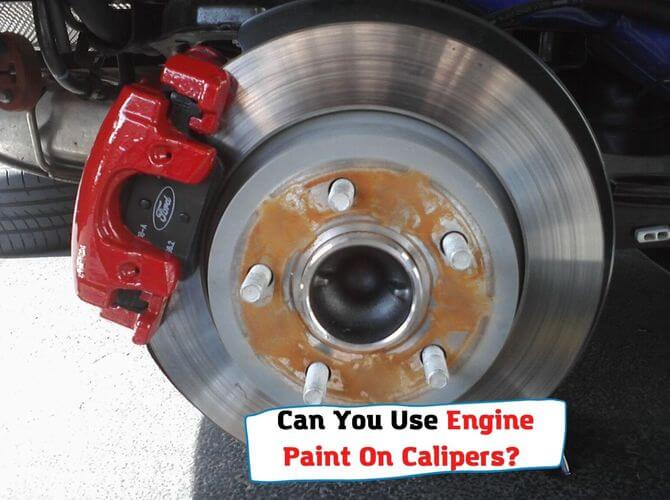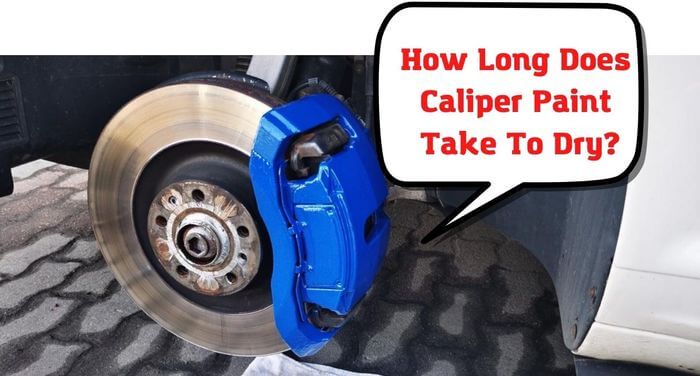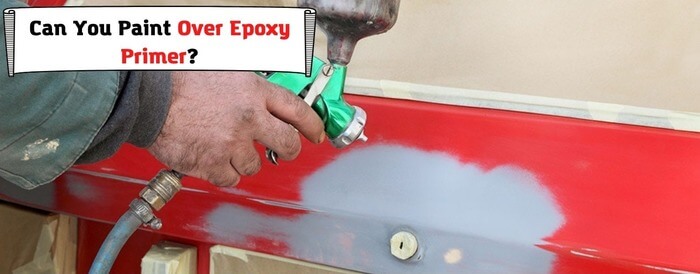When you do your next clear coat, you might be surprised to learn that you have done something wrong. Maybe it was the orange peel? Maybe it was the clear coat? Maybe it was both?
Whatever the case, there’s a good chance that if you have done something wrong, it will show up on your car. It could be a tiny scratch that shows up when the sun hits it at just the right angle or it could be something as big as a dent in your hood or roof. Whatever it is, chances are good that there is something wrong with your clear coat and chances are also good that if you want to fix this problem quickly, you’ll want to know what caused it so that you can fix things right away before any further damage occurs.

In this article, we’ll go over some things to consider when deciding whether or not to sand orange peel before a clear coat so that we can avoid doing damage to our vehicles and prevent some of the problems associated with doing so after they’ve already occurred.
Do You Sand Orange Peel before Clear Coat?
If you’re going to clear coat your car, you need to sand the orange peel off first. Why? Because the clear coating is only as strong as its weakest point—the paint’s surface.
When you apply a clear coat, you remove all of the imperfections on your car’s surface, but they’re still there. So, if there are any scratches or dents that are deeper than the thickness of the clear coat, then those imperfections will be visible through the clear coat and make it look like your car just got hit by a truck. If these imperfections exist on the surface of your clear-coated car, how would you ever know unless there was something standing out from it?
That’s why you need to sand away all of the orange peel before applying your clear coat. When you do this, not only will it make sure that everything is smooth and glossy on top of the paint job (which is what you want), but it will also help provide extra protection against UV rays and other environmental factors that could cause damage down the road.
The clear coat will adhere better to the smooth surface of your newly painted job if there’s a uniform layer of paint on your surface. If you wait until after you’ve painted your door and then try to sand off the orange peel effect, you’ll likely just remove most of your new paint job. So, when you’re preparing for painting, make sure that you have time to sand them first!
Things to Consider When Sanding Orange Peel
If you’re a car enthusiast, then you probably love the look of your favorite cars. From the inside out, there’s nothing more satisfying than seeing the craftsmanship that went into building your ride. But sometimes, even the most beautiful of cars can fall victim to unsightly orange peel.
If you’ve ever noticed orange peel peeling off of your car, then you know how frustrating it can be to get rid of it. When you need to fix this problem, here are a few things to consider:
- Is it really orange peel? You may think that if your car has orange peel, then it must be easy to remove—but sadly, this isn’t always true. Some people confuse orange peel with rust or corrosion when they see it on their cars (which happens more often than you might think). In order to make sure that what you’re removing is indeed orange peel and not rust or corrosion, use a bit of water-based rubbing compound when sanding down any spots where orange peel has appeared.
- Determine the best way to remove the orange peel. If it’s just a few spots, you can probably use an emery board or some sort of sandpaper. If you have a lot of orange peeling and want to get rid of it all at once, then you’ll need to use a sander instead.
- Decide what kind of sander will work best for removing the orange peel from your car. You might want something with a high-speed rotating sander that’s very efficient at removing material quickly—or maybe you want something with more surface contact so that you can get deeper into the surface of your paintwork.
- Don’t try to remove the orange peel with a razor blade. The blade will only cut through and make the process more difficult. Instead, use an orbital sander.
- Make sure that whatever you use for wiping up any leftover orange peel doesn’t contain wax or other chemicals that may damage your paint job’s finish.
So how do you decide whether or not to sand orange peel before clear coating? By weighing all of these factors against each other carefully and making an informed decision based on your needs
Is it Better to Wet-Sand or Dry-Sand Orange Peel?
When you’re looking for a quick fix for orange peel, you may want to consider using the wet sand or dry sanding technique.
Wet Sanding
Wet sanding is the best way to remove orange peel from your surface without leaving any residue behind. This method involves using a light film of water on your surface and then using an orbital sander to gently smooth the surface. This can be done at home with an orbital sander that has an attachment for a hose attachment kit (which allows you to keep the sander wet while sanding.)
Dry Sanding
Dry sanding is another option. This method is very effective in removing small amounts of orange peel, but it’s not recommended for larger areas because it can damage the surface if they aren’t properly soaked beforehand (this requires special equipment).
Wet sanding is the preferred option for most car owners who are looking to remove orange peel from their vehicles. This is because it allows for the removal of the orange peel without damaging the paintwork, which can happen with dry sanding. When you wet-sand, you use a water-based solution that comes in a spray bottle and works by removing loose particles from the surface of your vehicle.
These particles include orange peel and other contaminants that get stuck in your paintwork and make it look dull or damaged when they come off. Dry sanding is a more traditional method that uses a special wheel with abrasive granules on its surface to remove orange peel from your vehicle’s exterior. Dry sanding can be effective, but it can also damage the substrate underneath your paintwork if you are not careful with how much pressure you apply while using this technique.
Why does Orange Peel Occur?
Orange peel is one of the most common problems in cars. It can be found in all types of cars, from luxury to economy models. However, it is not hard to identify the orange peel problem: it’s usually a result of poor-quality paint and poor bodywork.
Orange peels are caused by defects in the paint or in the bodywork. These defects lead to roughness, which creates small caves on the surface of the car. The tiny caves look like an orange peel.
This problem occurs when there are too many defects in your paint job or when you have poor-quality body work done by an amateur who does not know how to properly apply paint. You might also see this problem if you have a car that has been in an accident or if it is old and worn out.
If you’re looking to prevent orange peel paint damage from happening, we recommend only having your vehicle painted by professionals.
How to Fix Orange Peel?
If you have an orange peel on your car, it’s important to know how to fix it. Orange peel is a common problem that can happen to any car. The most common cause of orange peel is improper painting technique. This causes the paint to become faded and brittle, which in turn causes it to crack and peel away from the surface of the vehicle.
There are several different ways that you can fix orange peel on your car:
- You may be able to remove some of the original paint by sanding down the affected area with 800 grit sandpaper or finer. This will increase the chances of keeping your vehicle looking like new again.
- You can also re-paint over any damaged areas with a high-gloss if necessary, which will help hide any leftover imperfections caused by peeling away at previous layers of paint over time.
How Do I Prevent Orange Peel?
The causes of orange peel on the paint can be a bit tricky to pin down. It’s often caused by improper preparation or application of the paint, but there are several other factors that come into play, too.
The most common cause is improper surface preparation, which means not allowing enough time for the primer or sealer to dry before applying the actual layer of paint. This can cause the paint to pull off in large pieces and leave behind the orange peel effect.
If the paint was applied too thickly, or if it was improperly mixed with pigments (which have color), then it will also leave behind this orange peel effect.
To prevent orange peel on paint, make sure you allow enough time for your primer or sealer to dry before applying any layers of paint over top of it. Also, make sure that your mix is thoroughly mixed with pigments so there are no clumps or uneven distribution throughout the layer(s).
Painting is a fun, creative process that can be made even more enjoyable by protecting your walls with a coat of paint. But if you’ve painted anything other than a small room or hallway, the last thing you want to do is spend time sanding back the layers of orange peel. Here’s how to prevent orange peel on your next paint job:
- Use primer before painting.
- Use high-quality paint and brushes.
- Paint in a well-ventilated area with fresh air circulating around you and your workspace (and avoid breathing through paint masks).
- Take breaks from painting every hour or so to let your eyes rest and breathe so that they don’t dry out from being in front of the brush too long without blinking or turning away from the surface for too long; this will help prevent irritation on your skin caused by sun exposure during the day or after dark if you’re working indoors at night (especially if it’s raining).
- Clean up all materials used during painting so that there are no distractions while working (this includes getting rid of old tape residue, wiping down surfaces before painting over them again with new colors, etc.).
Final Words
Do understand that sanding is extremely dangerous in all circumstances. We advise you to see a professional with regard to your valued asset if you have any doubts about your knowledge, tools, or general skill. Even though the advantages can be substantial, the chance of making a mistake increases the likelihood that the paint job will be harmed and will need to be redone.
- Can You Unmix Paint: Techniques, Consequences, Alternatives - February 23, 2024
- Does Primer Need to be Mixed? Effective Primer Application - February 22, 2024
- How to Make Old Paint Usable Again: Retrieving and Preserving Paint - February 21, 2024



